First car purchase in Germany
Buying a car in Germany
Buying a car is always an exciting thing, even more so when it comes to your first own car. But how do you buy a car in the first place, and what should you look out for? We have summarized it for you!
Our car buying guide shows you how to successfully buy your first car from the viewing appointment to the test drive and the final purchase contract. In addition to the manual, we provide you with a Young driver car buying video. You’ll also find everything you need to know about vehicle registration and insurance and summarize all the essential points about buying a car.
From the initial search for a new car, or your first car, to driving it off the seller’s lot can be a long road. There’s a lot to consider, and many a stumbling block can be lurking in wait for you. With our help, you don’t need a bus timetable anymore. Because we have your roadmap to your car, with it, you can jump over many stumbling blocks and hopefully save a euro or two. Let’s get started right away!
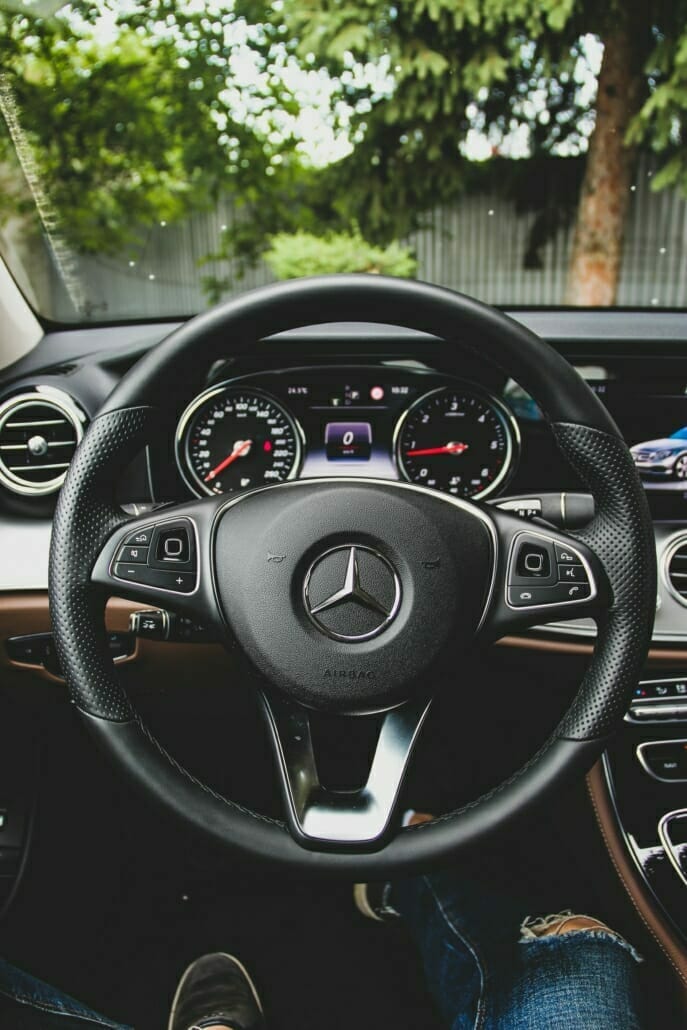
The way to your German car
Let’s take a look at the path to buying a car. True to the motto “First Things First,” we start at the beginning with the search for the right vehicle.
The search for the right car in Germany
To begin with, you need to calmly figure out which car you should be looking for in the first place. It is primarily determined by your existing budget anyway. But as a beginner driver, there are a few things you should pay special attention to. With all the temptations on the car market with countless powerful, large, or sporty cars, you should try to remain somewhat sensible initially.
It will also pay off in terms of insurance if you opt for a smaller engine and a somewhat smaller compact car in the beginning. With such a combination, you will have an easier time in many situations, especially when things get tighter. It would be best to consider how old the car can be.
Once you have found a direction in which you want to search, you can search for your possible dream car. We have a few more tips for you when choosing the right vehicle.
Our four special tips for the car search
Stay cool part 1: Don’t take everything you read on the Internet at face value. Good examples are forums where a particular defect is reported, which does not immediately mean that all models are affected. So don’t let it drive you crazy and get your impression of the actual car from the seller.
Stay cool Part 2: Stay neutral about the car. Avoid falling in love with the car before you’ve even seen it. Otherwise, in your euphoria, you might be quicker to overlook possible defects or regret the purchase later for other, avoidable reasons.
When buying, think about selling: It won’t be your last car in most cases, and that is, you will eventually sell the car again. Therefore, try to avoid things like particularly wild colors. A plain VW Polo in black is more sellable than one in bright pink. Also, in the interior, you should avoid too unique decorations.
Watch out for tuning parts: It’s better to keep your hands off vehicles that have already been tuned. You can never be 100% sure that everything has been installed correctly, and it is better to take a series vehicle and then do the tuning yourself.
The viewing appointment
After an extensive search, you have finally found your object of desire. Then it’s time for the next step and to contact the supplier. For simplicity, we will assume that you want to buy a used car for the rest of our scenario. Tips for buying a new car will come later.
For a proper inspection appointment, make sure you do these four things:
- Take enough time
- Do not make an appointment after dark
- Get a used car checklist
- Never go to an inspection alone
Time pressure is a bad companion if you want to look closely at the car. So make sure you have enough time to look at everything in peace. It would be challenging to find all possible scratches or other defects in the dark – even with a flashlight. However, it would be best to have a flashlight with you in daylight to see even the darkest corners in the engine compartment. A used car checklist is another essential companion. With it, you can checkpoint by point and thus take a close look at the car.
Speaking of magnifying glasses: Four eyes see more than two. It gives us the most important reason not to go to the inspection alone. In addition, it is often a pleasant moral advantage to have additional support during discussions with the seller. Of course, the accompaniment is especially valuable if it knows cars well, and the emphasis here is well.
The test drive
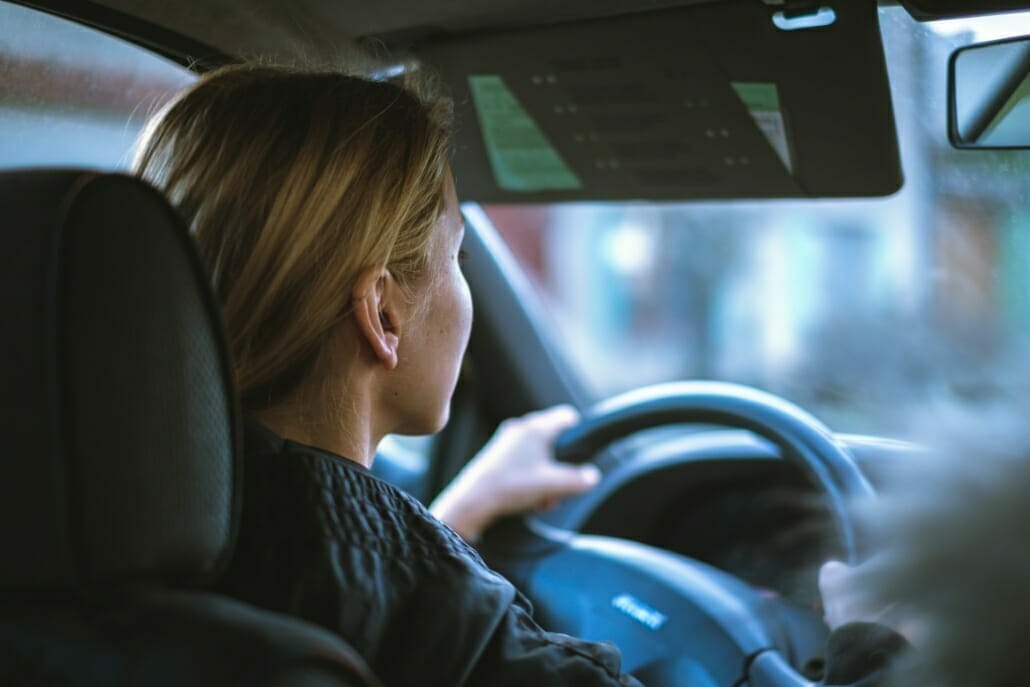
Your companion can also support you during the test drive. You have an additional driver besides the extra pair of ears that might pick up suspicious noises. Far too rarely do prospective buyers also ride along as a passenger. You can get to know the car even better from the passenger seat or back seat. It’s better not to concentrate on all these things while driving. Of course, you still have to drive the car yourself to test the driving experience, the engine, the brakes, etc.
Before starting the test drive, you must check whether the car is adequately insured and registered with the owner or dealer. Whether you can drive off on your own or whether the seller accompanies you varies from case to case. The test drive should also take you to a test center if you don’t have a real car expert on board anyway. There, the car will be checked according to all the rules of the art. Finally, you will receive a detailed inspection report that you can refer to when negotiating the price if any defects could lower the cost.
The showdown: the price negotiation
You have found the car of your choice, inspected it, and test-driven it. The next step is price negotiation. For you, the decision is made: “I want to buy this car!” But keep those thoughts to yourself for now. A rock-solid poker face is your most crucial negotiating companion from now on. Continue to be critical and point out possible defects. It will give you the best chance of getting the price down a bit. It is also where the inspection report with possible defects can come into play.
A simple tip to get an additional discount quite quickly: Pay cash
Despite all your coolness, you should always keep one thing in mind: The negotiation is at eye level. Try not to see yourself as a puny supplicant or the dealer as your insurmountable enemy. In such situations, we tend to think of ourselves and our power as much smaller than it is. As confident as the salesperson may seem, they may also feel small and wonder, “What if he or she doesn’t buy the car?” Therefore, stay calm, don’t get too impressed, and show the salesperson your respect. On this basis, you can find a reasonable price together.
For the very hardened: If the price negotiation is stuck and the seller does not and will not give in: Break off the negotiation and make an effort to leave. Often the seller will still give in.
If the dealer really can’t do anything about the price, you still have the option of agreeing on certain additional services. These can be things like a later inspection, a set of tires, underbody protection, or simply a fuel voucher. Something is always possible.
The purchase contract
The sales contract has only one role when buying a car: it regulates all the buyer and seller’s rights and puts them in writing. You can’t go too far wrong with the contract itself, and there are various templates online that contain all the necessary information. Once this is done, you should take note of the following things:
You must receive all keys and documents from the seller
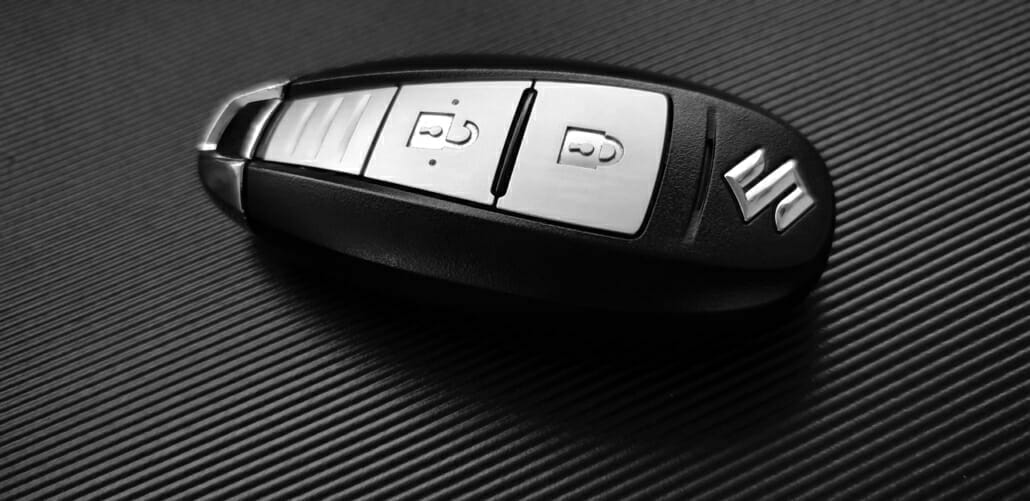
Take a close look at the papers. Check that everything matches, such as the chassis number.
If the seller does not own the car, he needs a power of attorney to sell it.
This information must include in the purchase contract.
If the seller does not use any of the known templates, you should make sure that at least the following things are recorded in the contract:
- Address, name, date of birth, and identification number of the buyer and seller
- Vehicle data: Manufacturer, type, registration number, vehicle ID number, first registration, and any accessories that are being sold with it
- purchase price
- possible detected defects or accident damages
- Warranty or guarantee commitments of the seller (if available)
- declaration of the seller for re-registration
- other agreements
- your confirmation to have received the documents, the car, and the keys
- Signatures of buyer and seller
You should also pay attention to the warranty issue when buying a car. A commercial seller is obliged to give you at least one year warranty. However, this does not apply to a private seller, and he does not have to assume any liability if defects occur later.
Purchased! What do you need to know about insurance and registration?
After the purchase is before the registration. What do I have to do after buying a car? First of all, you need car insurance. It is required by law and must be at least in the form of motor vehicle liability insurance. If you cause an accident, it covers the damages to other road users.
Conversely, their insurance covers your damages. In addition, there are partial and comprehensive insurance policies. It includes damage caused by hail, thunderstorms, fire, or theft. Fully comprehensive insurance covers all damages and injuries you cause. Provided you are not grossly negligent or driving under the influence of drugs.
What you should pay attention to when it comes to insurance, especially as a beginner driver, is a story in itself.
The three types of car insurance in Germany
Motor liability: insures the damages of the other party; legal minimum
Partial cover: covers parts of your damage (examples: damage due to storms, fire, theft)
Fully comprehensive: covers all your damages
As soon as you have taken out an insurance policy, you will receive the electronic insurance confirmation in the eVB number. It is a combination of seven numbers and letters.
Car registration in Germany
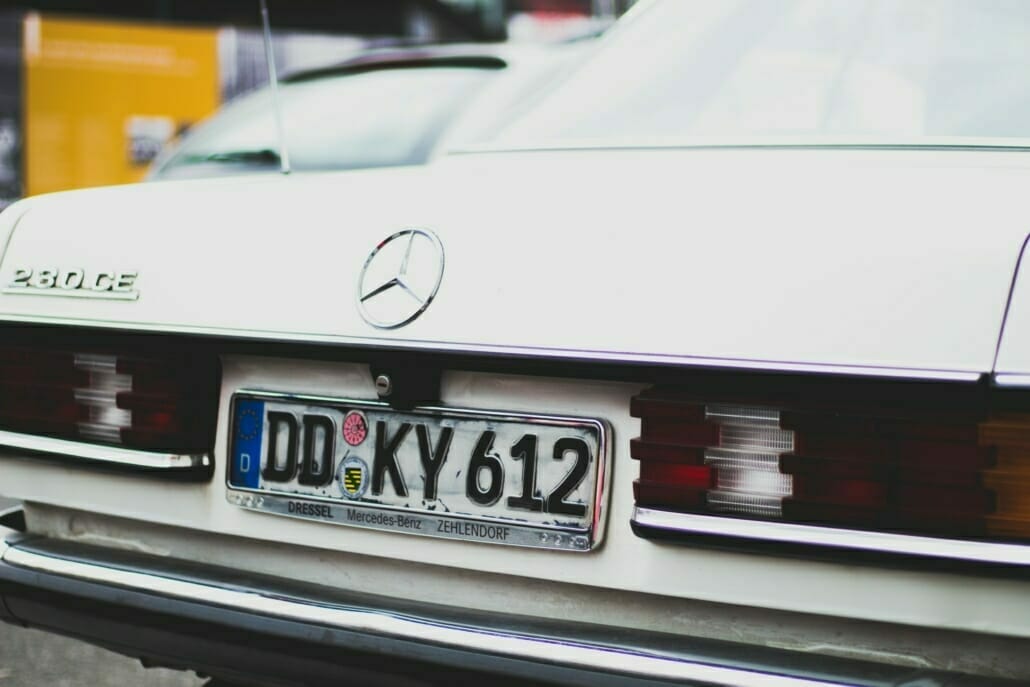
The registration office has direct access to your eVB number via a central database. It confirms that you have (at least) taken out appropriate motor vehicle liability insurance.
Together with the other documents, nothing more stands in the way of registering your new car. Depending on the registration type, you will have to pay between EUR 26.30 and EUR 41.60 for the registration. After that, you have everything you need to drive off with your license plate and environmental badge.
What you need for registration:
- Registration certificate part I (vehicle registration document)
- Registration certificate part II (vehicle title)
- evB number: electronic confirmation of insurance
- a valid form of identification
- Money for registration fees
A tip for the future: If you ever move, you can also take your license plate. You have to change the address in the vehicle registration document at the registration office and pay between EUR 20.00 and EUR 30.00 for this. This way, you can continue to drive with your Berlin license plate after moving to Munich.
Our three most important tips for buying a used car
Finally, we would like to summarize our top tips for you briefly:
- A test drive is a must. If possible, also as a passenger. Make sure that the car is insured and registered.
- Be sure to take a used car checklist with you and go through it at your leisure.
- Have the car thoroughly checked at the test center and use the test report when negotiating the price.
- Our three most important tips for buying a new car
- As promised above, we have a few unique tips on buying a new car for you:
- Again, take a test drive to get a good impression of the model.
- Compare prices. Every dealer usually has different prices or services on offer.
- Pay attention to the possible new car warranties and the various manufacturers.
Ten steps to your car
Finally, let’s briefly summarize your way to your car.
- You start looking for your dream car, but stay calm.
- You make an appointment to see the car in daylight and take someone with you.
- With the help of a used car checklist, you take a close look at the car.
- You test drive the car as a driver and a passenger and go to the test center.
- If you want the car, don’t let it show.
- You go into eye-to-eye price negotiations with the seller with the test report.
- You sign the purchase contract.
- You take out insurance.
- You register your car.
- Have a good trip!
Purchase and leasing of vehicles in Germany
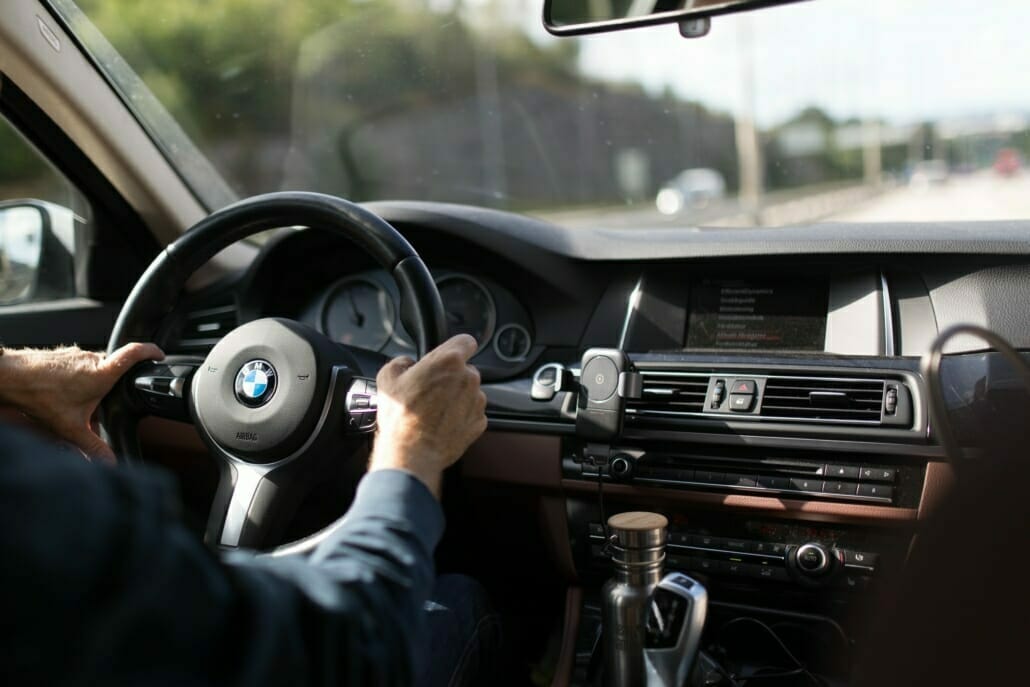
As an EU citizen, you can buy or sell a car anywhere.
Your rights
Your rights when buying a car abroad – and the amount of VAT due – depend on whether
- the car is new or used
- you buy the vehicle from a commercial car dealer or a private individual
- the seller is based in an EU country
- You generally enjoy the highest level of legal protection if you buy a new car from a commercial dealer based in the EU.
Under EU consumer protection rules, you have at least a two-year warranty claim if the car you buy has a defect or does not match the description.
In some EU countries, the warranty period for used cars can be shortened to one year. However, this requires a contractual agreement between the buyer and seller at the time of purchase.
Note that EU consumer rights do not apply to private sales, so you should be careful in this case.
Check vehicle documents
When buying a car abroad, get all the paperwork you need to register it in your country of residence. Make sure you have the original papers for the vehicle.

Transport of the purchased car
If you buy a new car in another EU member state, you need to think carefully about how to transfer it home afterward, as it is not yet registered in your country of residence.
You can attach the vehicle to an insured and registered car with a tow rope and tow it home.
You can hire a specialized transportation company.
You can drive the car home yourself, and you must insure it in the country of purchase and put transfer plates on it.
Warning!
Ensure that your insurance is valid in all countries to be crossed and that the license plates are recognized. Since transfer plates are not harmonized in the EU, obtaining or recognizing them in another EU country is not always straightforward. Check with the insurance company and the registration authority.
You should obtain the final license plate in the country where you register your car – usually, the country where you have your center of life or permanent residence.
Moving abroad with a leased vehicle
In this case, you should expect difficulties. Leasing allows you to use a vehicle for the duration of the leasing contract, and when it expires, you have the option to buy it. Before that, however, the natural or legal person who leases the car to you is its legal owner.
Since you are obliged to insure and register the car in your country of residence, there could be problems if your insurance is not valid in the country you want to move to.
Also, the lessor might disagree with registering the car in another EU country.
Imagesource: Unsplash
You need to load content from reCAPTCHA to submit the form. Please note that doing so will share data with third-party providers.
More Information


